Why is There a Scab on my Areola

















Scabs can result from both harmful and harmless factors, and at-home treatments can help.
By Ashley Broadwater, November 8, 2021

Illustration by Jaelen Brock
One night in college, I noticed a weird, green-looking scab on my areola. The depiction is cringe-worthy, I know. "I guess the last guy I hooked up with bit my nipple off," I joked to my friends. But as I'm sure many of us have (even though we know we shouldn't), I turned to Google—and saw Paget's disease of the nipple, a form of breast cancer, listed as a potential cause.
I went to Campus Health soon after and asked my doctor about it. She said she'd look into it, but I never heard back. The scab went away in time, thankfully, but I'm still wondering: What happened? How common are scabs on the nipples?
A scab can form on your areola from a variety of abrasive factors, so you may have to do some deducing on your own or with a doctor to figure out the exact cause.
One potential cause is breastfeeding. Approximately, 80 percent to 90 percent of breastfeeding women experience nipple pain and fissures according to a 2018 study by the Journal of Pharmacopuncture.
Other reasons range from innocent to, unfortunately, concerning. "It could be due to a partner sucking roughly there, it could be due to some other type of abrasion or suction device that damages the skin, it could be due to Paget's disease of the nipple, eczema, an insect bite, itch, rough clothing, sandpaper, piercing or any other cause," said Constance M. Chen, M.D., MPH, FACS, a board-certified plastic surgeon and breast reconstruction specialist.
Symptoms of Paget's disease include itching, tingling, redness, flaking, crustiness and thickening of the area, as well as a flattened nipple or yellow or bloody discharge.
Picking at a scab is entirely too tempting, I know. But according to Chen, avoiding this is crucial. "A scab is essentially a [biological] dressing, so there is no need to pick off a scab, since a scab is the body's way of protecting itself," she said.
Further, Chen encouraged people to keep the area clean. "Any skin abrasions should be kept clean to avoid infection," she said. "Keep the wound clean with soap and water, and then pat dry and keep dry."
Besides cleaning your areola, avoiding tight clothing and bras can help you prevent chafing and irritation. "Athletes can also experience scabs on their areola and/or nipple due to the friction from their sports bra," said Alexander Zuriarrain, M.D., FACS, a double board-certified plastic surgeon with Zuri Plastic Surgery.Recommended
Zuriarrain also suggested steps a patient can take at home to ease discomfort. "Basic home remedies include the use of petroleum jelly to lubricate and moisturize the affected area," he said. "Low-dose steroid creams, such as 1 percent hydrocortisone, can also help decrease inflammation in the very short term."
Additionally, be wary of what detergents, soaps and lotions you use. "Other home remedies include using a hypoallergenic soap and detergent to avoid any dyes or perfumes that can also exacerbate the condition," Zuriarrain continued.
And, of course, if you're dealing with one of the skin diagnoses mentioned above, take care of it as prescribed. "If the cause is a dermatologic condition such as eczema or psoriasis, the patient will need to seek additional treatments by her dermatologist," Zuriarrain said.
But at what point is cleaning the scab not enough? Is seeing your doctor a necessary next step for a scab on the areola?
"People should see a doctor if a wound is not healing or if it becomes infected," Chen said. "Signs of infection include high fevers, chills, warmth, redness, tenderness and purulent drainage." (Purulent means pus-filled discharge.)
Zuriarrain explained the skin flora microorganisms that can cause infection are staphylococcus and streptococcus, and fungal infections are less common. "What makes the scab turn into an infection is breakdown of the skin surface that allows for these microorganisms to penetrate deeper into the soft tissue," he said.
How long should you try to let the scab heal with home remedies, though, before seeing a physician? "If the scab does not heal over the course of one to two weeks, it should prompt a visit to their primary care physician for examination and possible radiologic testing," Zuriarrain said.
Overall, it's best to err on the side of caution, especially if you believe the scab may be a sign of Paget's disease. "It is important to note that Paget's disease of the breast does manifest with scaling and scabbing of the areolar region, and failure to diagnose this disease early on can lead to a severe form of breast cancer," Zuriarrain added.
But while a random scab on your areola can be alarming, it's not necessarily a reason to panic. At-home treatments can help, as can your doctor. To start, just keep an eye on it, paying attention to signs of infection and taking it easy in the bedroom. If that's not cutting it—or if you want to play it extra safe—calling your doctor is never a bad idea.
Get a one on one consultation with Dr. Z in his beautiful practice in Miami, FL
7540 SW 61 Ave, South Miami, FL 33143













